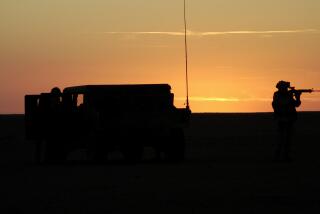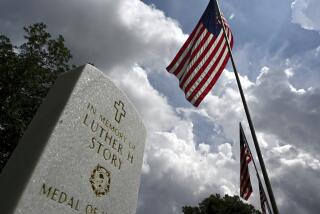Frank Wada, Nisei veteran of WWII battle to rescue ‘lost battalion,’ dies at 99
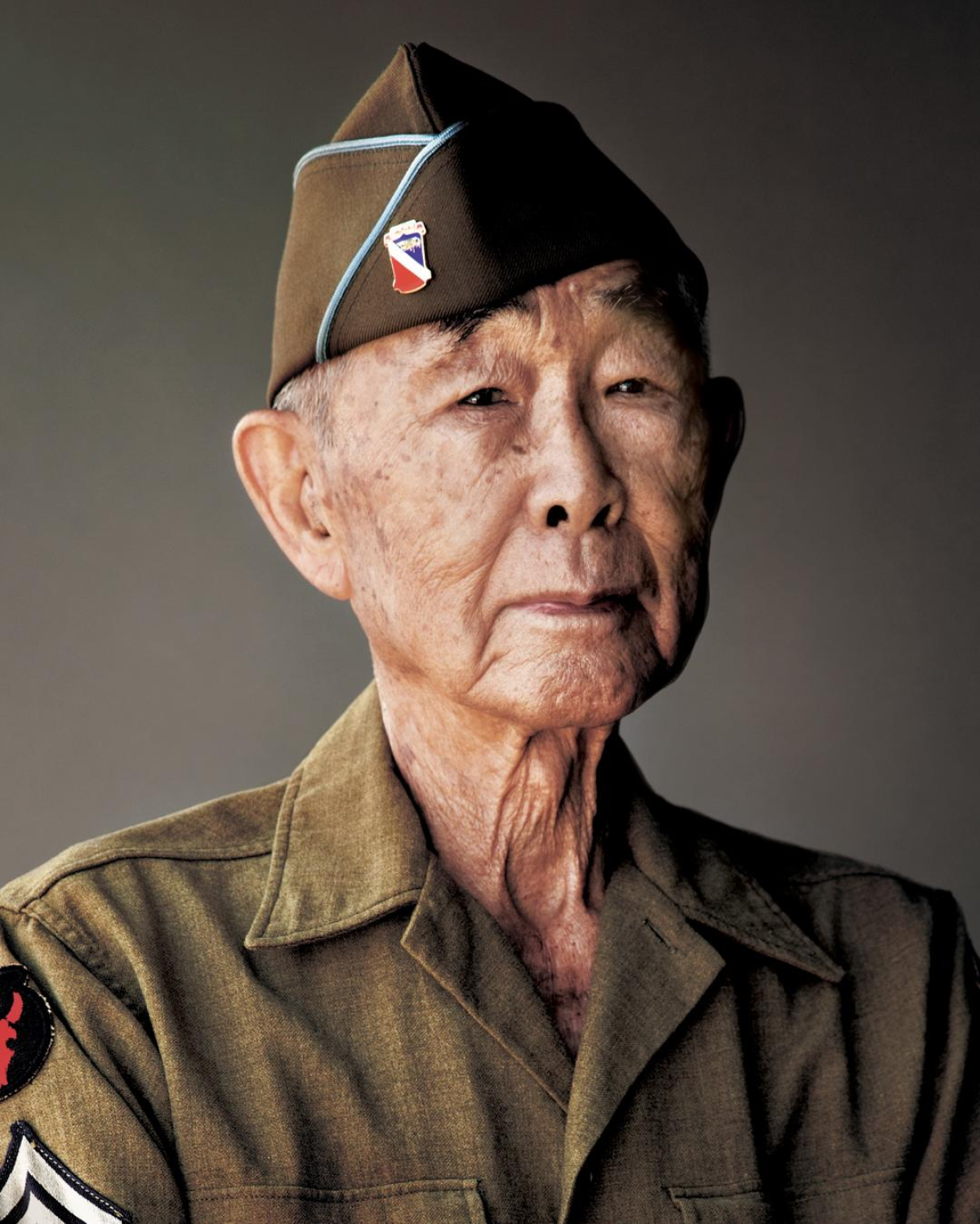
For most of his 99 years, World War II veteran Frank Wada Sr. didn’t talk about his service in the U.S. Army’s 442nd Regimental Combat Team.
But late in life, he could be talked into a rare media interview or photograph so that his regiment’s history wouldn’t die after he and his fellow soldiers were gone. Wada died peacefully on June 14 at his home in the San Diego County community of Spring Valley. Family members said they believed Wada was the regiment’s last local survivor.
Wada served in E Company of the 442nd, an all-volunteer regiment made up entirely of Nisei, the American-born descendants of Japanese immigrants. Most of its recruits came from internment camps, where 110,000 Japanese Americans living on the U.S. West Coast were forced to move after the Japanese attack on Pearl Harbor in December 1941.
The 442nd would become the most decorated unit, for its size and length of service, in the history of the U.S. military. Roughly 18,000 men served, ultimately earning more than 4,000 Purple Hearts, 21 Medals of Honor and an unprecedented seven Presidential Unit Citations, according to the Go for Broke National Education Center. “Go for Broke” was the regiment’s motto, representing the soldiers’ fearlessness in battle to prove their patriotism to their native land.
Wada’s son, Greg Wada, said his father was quiet and reserved but proud of his service. He had “Go for Broke” on his car’s license plate, and the family jokes they’ll affix a “Go for Broke” sticker to his casket before it’s lowered into the ground at Miramar National Cemetery next week on what would have been his 100th birthday.
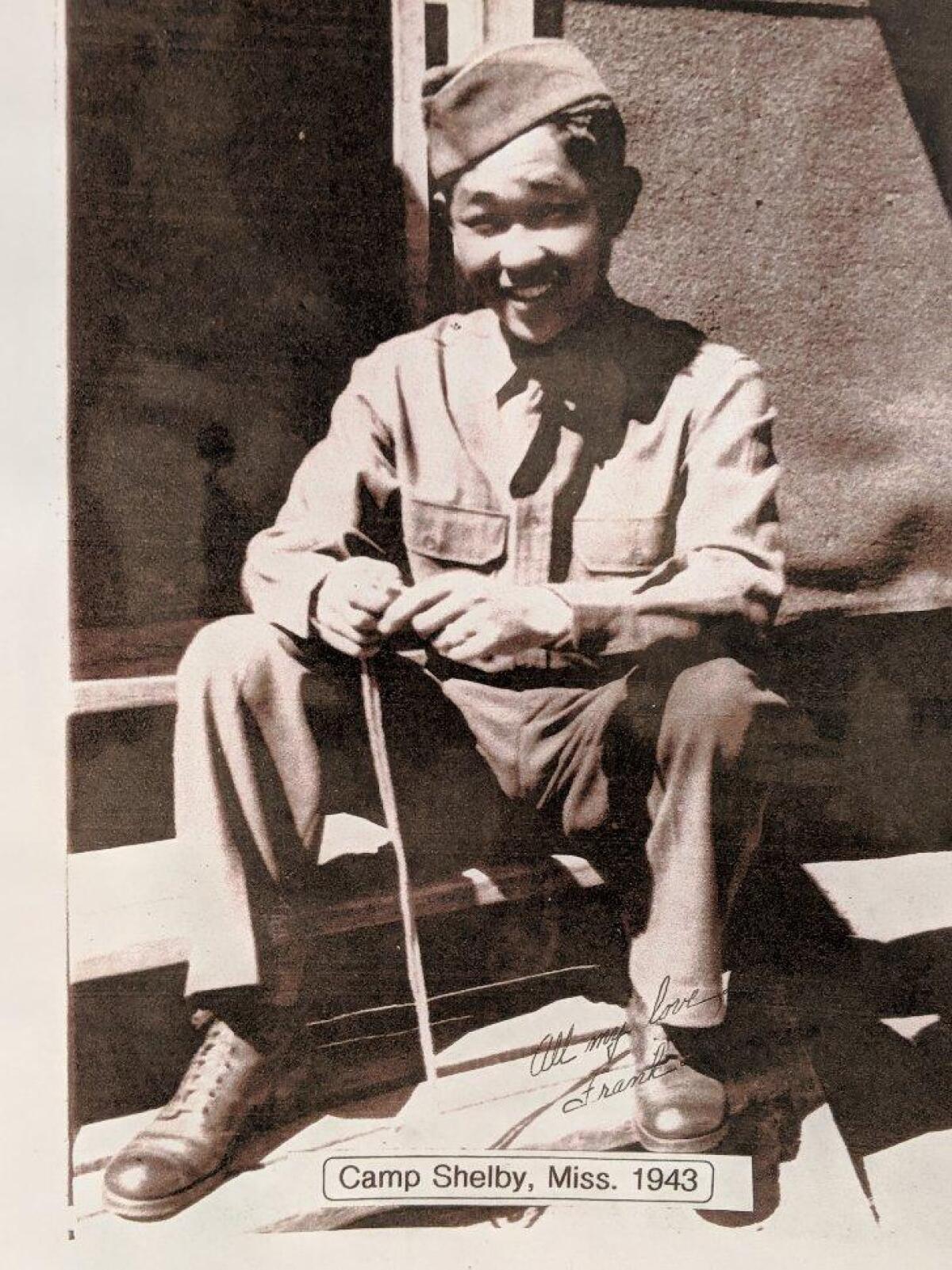
“It wasn’t until I was in high school that I found out what happened to my dad in the war,” Greg Wada said. “He never talked about it, and he never displayed any of his medals. But he was proud of what he did, and he always said: ‘You’ve got to do the right thing, and the right thing was to serve.’”
Frank Mitoshi Wada was born July 23, 1921, in Redlands to Tamakichi and Akiyo Wada. According to a profile on Wada published in May on the U.S. Department of Veterans Affairs website, he faced frequent anti-Japanese discrimination when he was growing up in San Bernardino County. In his senior year of high school in 1938, a fellow student asked him which side he would fight for if the U.S. went to war. When Wada’s mother heard about that confrontation, she made her son promise that, if he were ever to fight, it would be for America.
After high school, Wada moved to San Diego, where he worked on his sister Mary’s farm in Chula Vista. The morning after the Pearl Harbor attack, he tried to enlist in the U.S. Army but, like other Nisei, was turned away as an “enemy alien.” Three months later, his family was ordered into a prison camp. In mid-1942, they ended up at the camp in Poston, Ariz., where he would meet his future wife, Jean Ito of San Jose.
In 1942, the Army called up the Japanese American men serving in the National Guard in Hawaii to form the first Nisei unit, the 100th Infantry Battalion. Their discipline and success in training was so impressive that orders went out in 1943 to form a second unit, the 442nd, from Hawaiian Nisei and volunteers from the mainland internment camps. Wada was one of the first Poston internees to apply. His decision didn’t sit well with many people at the camp.
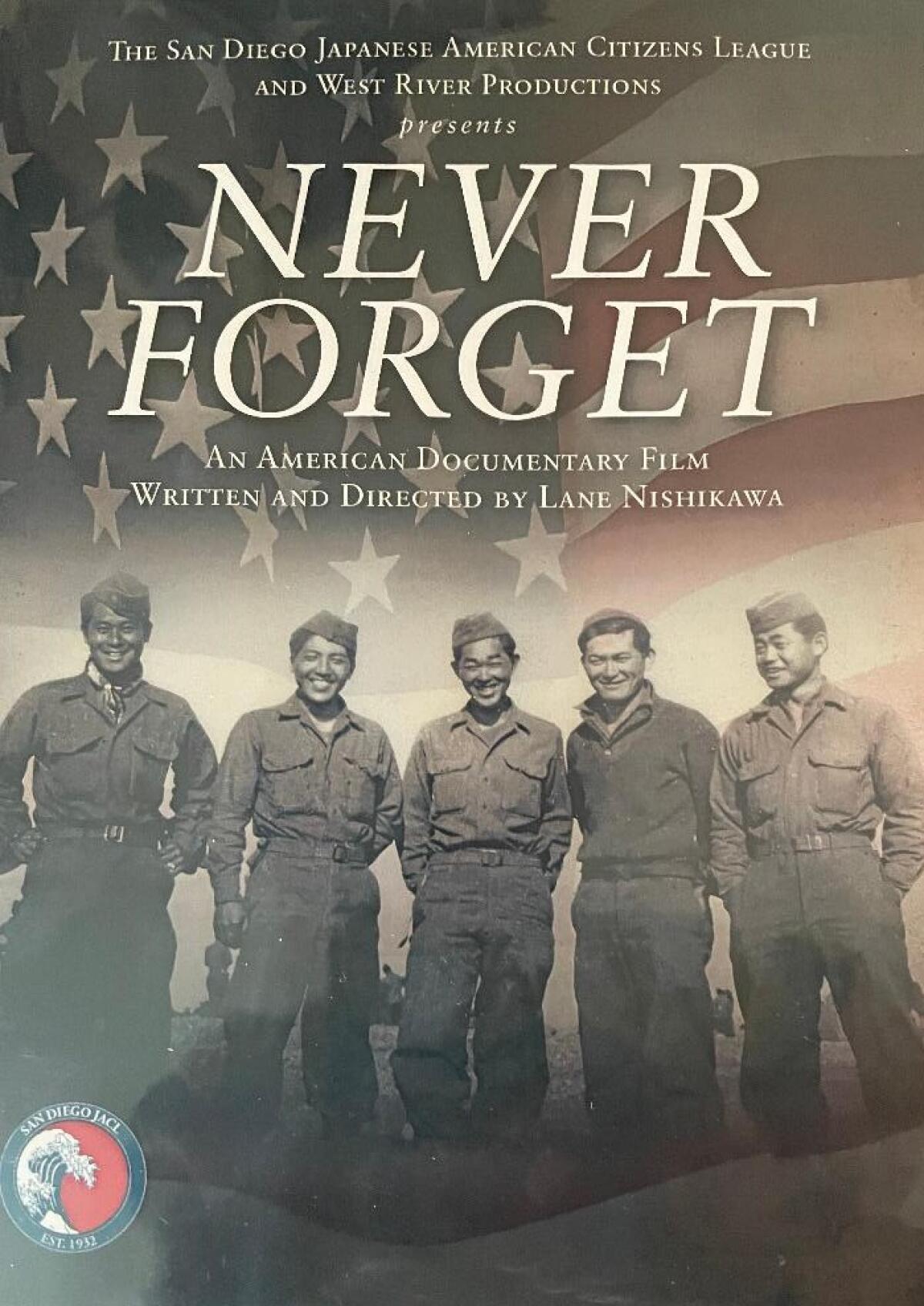
But “when they came for volunteers,” Greg Wada said, “my dad went to his sister Mary and asked what he should do. She said, ‘If you don’t volunteer, we may never get out of here.’ So he did.”
Before leaving for training at Camp Shelby in Mississippi, he married Jean at the camp. Their marriage endured happily for 69 years, until her death in 2012. After a year of training, the 442nd soldiers shipped out to Europe, where Wada’s company served on the frontlines in the Rome-Arno, Po Valley, Rhineland and Ardennes campaigns. The casualty rate was high. Within a month, Wada rose three ranks from scout to platoon sergeant, according to the U.S. Department of Veterans profile.
The 442nd’s greatest test — and one that nearly cost Wada his life — came in October 1944, when the combat unit and the 100th Infantry Battalion together fought to liberate Bruyères, France, and rescue a small Texas battalion surrounded by German troops. The bravery of the Nisei soldiers, who hurled themselves at the dug-in German forces and fought hand-to-hand at close range, led the “lost battalion rescue” to become known as one of the greatest ground battles of World War II.
During the final days of the battle, Wada was seriously injured by shrapnel to his lower body and spent more than a month in the hospital. Among the many combat decorations he received were a Purple Heart, Bronze Star and a combat medal with four oak leaf clusters. In 2011, he and all 442nd and 100th veterans received the Congressional Gold Medal. And in 2015, he received France’s highest military award, the Legion of Honor.
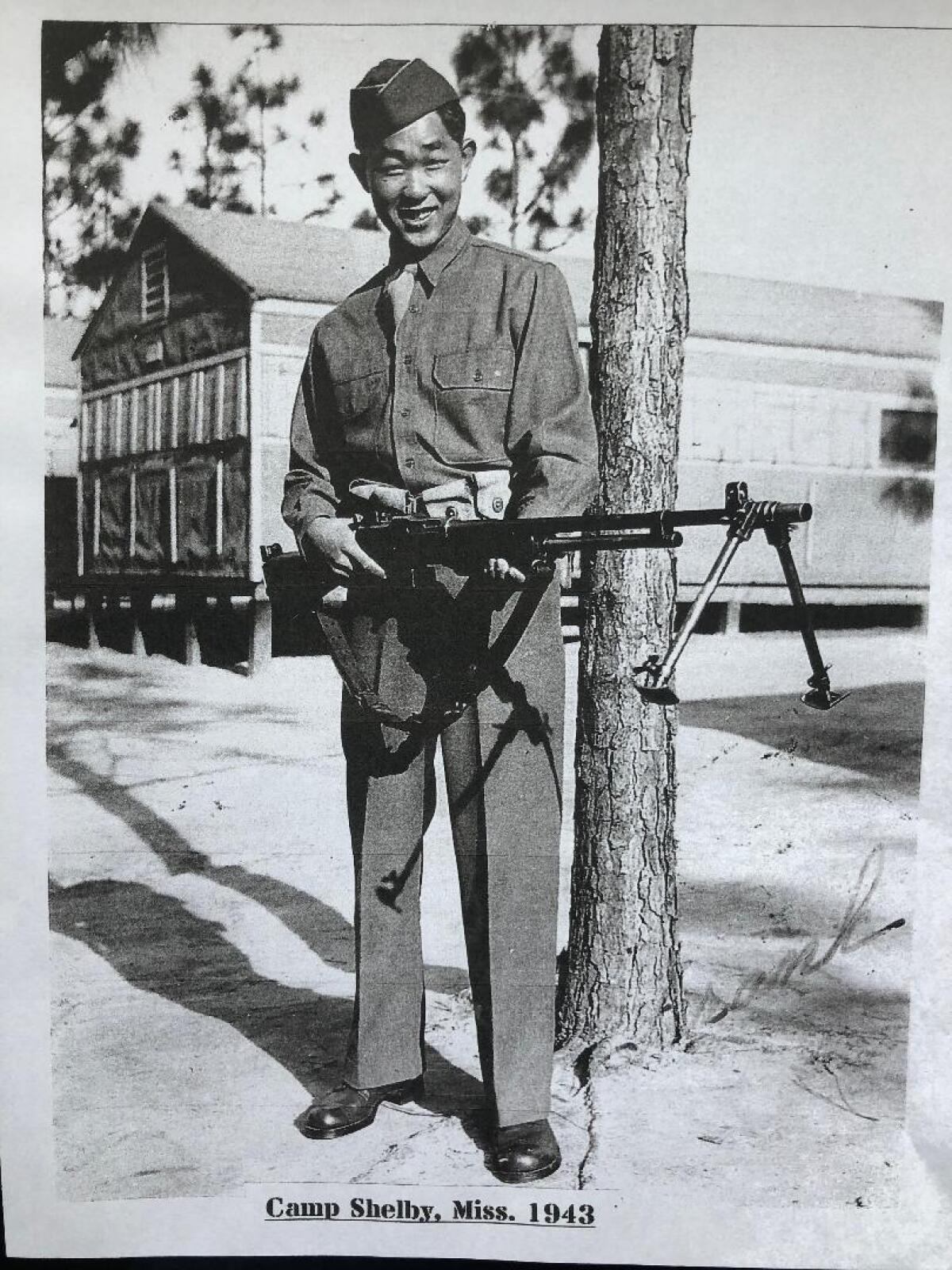
After the war, Wada and his wife, Jean, returned to San Diego, where he designed and built a home on a 350-acre family farm in the Encanto area of San Diego. Together they raised five children. Wada worked for a time for the U.S. Postal Service, went to college, and then worked for many years in the public works division at the former Naval Training Center San Diego. He started there as a lawnmower repairman and worked his way up to the position of contract specialist before retiring in 1977.
Greg Wada said his father remained active in retirement, enjoyed gardening and was still driving his car right up until the pandemic, after which his health began to gradually decline.
“He was very independent,” he said. “He did everything on his own, never took handouts and was always helping everyone else. He put himself through college after having kids and took care of my mom her whole life.”
In 2018, Wada posed for a portrait in his uniform for Los Angeles photographer Shane Sato, who has published two volumes of picture books of Nisei veterans titled “The Go for Broke Spirit: Portraits of Courage.” Sato, whose uncles served in the 100th battalion, said he created the books because not enough Americans knew this chapter of history.
“I got involved with his project because I felt it needed to be done,” said Sato, who described Wada as very kind and humble. “One of the reasons many Japanese Americans do not even know their own history is the Nisei never shared their stories. I believe all of these men wanted to share these stories with the public, but being Japanese they did not know how or felt it was wrong to talk about themselves.”
Wada is survived by his daughters, Dorothy Saito and Janet Kobayashi, and his son, Greg, brothers Henry and Robert, nine grandchildren and 10 great-grandchildren.
More to Read
Start your day right
Sign up for Essential California for the L.A. Times biggest news, features and recommendations in your inbox six days a week.
You may occasionally receive promotional content from the Los Angeles Times.
